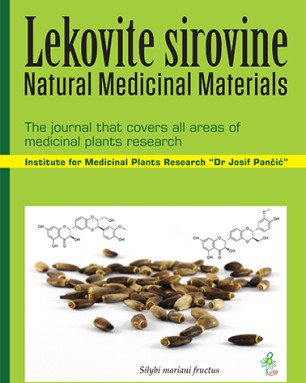Institute for Medicinal Plants Research “Dr. Josif Pančić” , Belgrade , Serbia
Institute for Medicinal Plants Research “Dr. Josif Pančić” , Belgrade , Serbia
Department of Pharmacognosy, Faculty of Pharmacy, University of Belgrade , Belgrade , Serbia
Department of Pharmaceutical Technology and Cosmetology, Faculty of Pharmacy, University of Belgrade , Belgrade , Serbia
Lichens represent a promising source of antimicrobial, cytotoxic and antioxidant agents. Their great pharmacological potential lies in the fact that they represent specific symbiotic organisms and thus possess natural roles allowing them to be highly adaptable to different environmental conditions. On the other hand, stated biological activities of lichens with prospective medicinal significance may be connected to their long-term use in traditional treatment of various ailments. Genus Usnea from the Parmeliaceae family is certainly one of the best studied in terms of chemical composition and biological properties of its extracts and/or isolated compounds. In the first part of the study, a detailed review of literature has been performed yielding a detailed report on the investigations of biological activities of the lichens belonging to this genus. In the second part of the study, chemical composition of the lichens from the genus was described and, additionally, a survey of the biological properties of the most representative secondary metabolites in these lichens has been reported. It could be concluded that the extracts and/or isolated compounds from the lichens belonging to the genus Usnea may be considered a valuable source of prospective drug candidates with potential clinical relevance.
This is an open access article distributed under the Creative Commons Attribution License which permits unrestricted use, distribution, and reproduction in any medium, provided the original work is properly cited.

The statements, opinions and data contained in the journal are solely those of the individual authors and contributors and not of the publisher and the editor(s). We stay neutral with regard to jurisdictional claims in published maps and institutional affiliations.